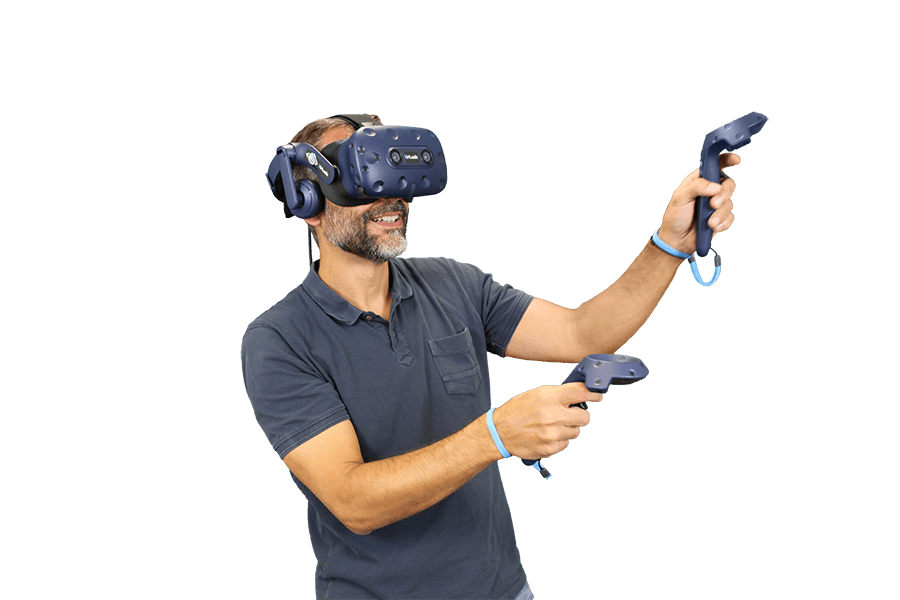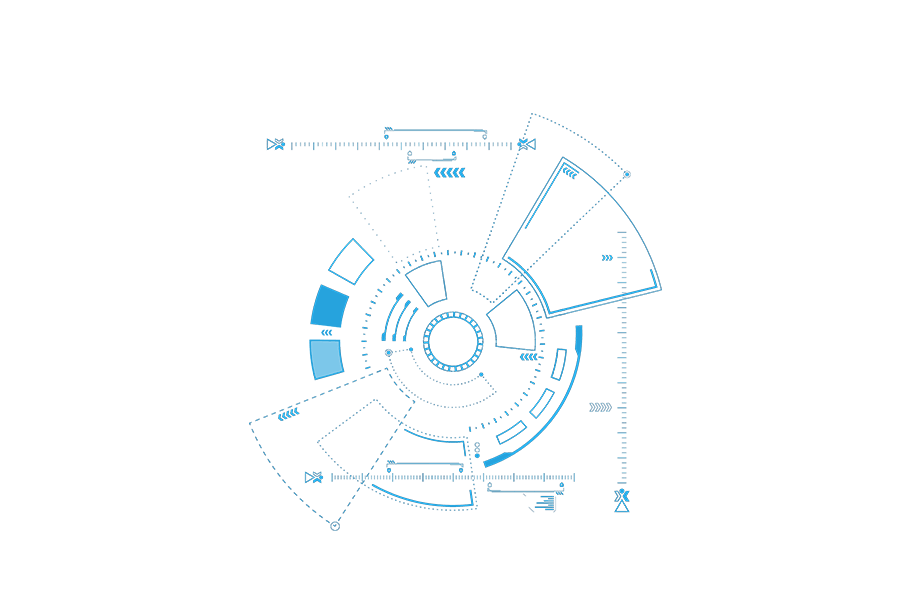Glossary



Virtual Reality:
The term "virtual reality" (or immersive multimedia or computer simulated reality) typically refers to computer technology that simulates the physical presence of a user in an environment artificially generated by software. Virtual reality creates an environment with which the user can interact. Virtual reality therefore artificially reproduces a sensory experience, which may include sight, touch, hearing and smell (visual, aural or haptic).
Functional rehabilitation
Functional rehabilitation aims at taking care of patients in order to avoid the appearance of deficiencies linked to their pathology (in particular following traumas leading to partial disability). The aim is also to improve the autonomy and therefore the quality of life of the patients. Several health professionals are involved in functional rehabilitation, which calls on the skills of physiotherapists, physical medicine doctors, occupational therapists, psychomotor therapists, prosthetists, etc.
vestibular rehabilitation
Vestibular rehabilitation is a neurosensory re-education allowing to act in a selective way on the 3 sensory inputs of balance: The vestibular system - Vision - Somatosthesia or proprioception.
rehabilitation balance disorders
The aim of balance rehabilitation is to improve the subject's stability for all activities and prevent falls.
kinetosis/motion sickness rehabilitation
Rehabilitation to treat motion sickness or kinetosis (seasickness, car sickness, airsickness, space sickness etc...). Kinetosis is characterized by well known symptoms: nausea, sweat, sweating, pallor, tachychardia etc...
rehabilitation neurological disorders
Rehabilitation to manage many neurological conditions:
Hemineglect, Hemiplegia following a stroke, CBT, a fall ...
Parkinson's, Alzheimer's, MS, Ataxia ...
Para/tetraplegia
Rehabilitation for ADLs ...
posturological assessment
The postural assessment is a real check-up of all the body's "gateways" that send information to the brain. Objective: to identify the sources of imbalance. During the check-up, the posturologist carries out a thorough clinical examination.
check-up Physiotherapy diagnosis
The Kinesitherapy Diagnostic Assessment is mandatory for any therapeutic treatment in order to establish the diagnosis of the patient, measure its evolution and ensure the liaison with the prescribing physician.
vestibular disorder
The vestibular syndrome is the clinical manifestation of an impairment of the vestibular system, a peripheral sensory organ composed of the posterior labyrinth, the vestibulocochlear nerve, and its vestibular nuclei.
balance disorder
A balance disorder is a problem that may be related to the inner ear, brain or proprioception that causes instability in the person. The person experiences dizziness, or sensations of movement or floating, more or less violent, continuous or not.
kinesiophobia
Kinesiophobia is the fear of pain due to movement. It is a term used in the context of rehabilitation medicine and physiotherapy. Kinesiophobia is a factor that hinders rehabilitation and actually prolongs disability and pain.
Virtual Reality Exhibition or VRET or Virtual Reality Exposure Therapy
Virtual Reality Therapy is the use of immersive tools (video headsets, computer, motion tracker, etc.) and computer-generated virtual environments to treat individuals with physical or mental illnesses or disorders.
optokinetics
An optokinetic stimulator is a digital or mechanical device that projects a moving visual scene in a booth to a patient who is usually standing. It triggers a nystagmus in the direction chosen by the therapist, also causing a postural deviation.
Rod & Frame Test
The Rod & Frame test is a psychophysical method of testing perception. It is based on the use of a Rod & Frame device that uses a rotating rod placed inside an individually rotating drum, allowing an experimenter to vary the participant's frame of reference and thus test his or her perception of the vertical.
Proprioception
Proprioception is the ability, conscious or unconscious, to know the exact position of one's body and each of its limbs without using the five usual senses. As such, it can be considered as a 6th sense. It is essential for moving, coordinating our movements and staying in balance. In concrete terms, it allows you, for example, to walk straight, to touch your ear, or to raise your knee at a right angle in the dark.
Mirror therapy
Mirror therapy is a rehabilitation therapy in which a mirror is placed between the arms or legs so that the image of a moving unaffected limb gives the illusion of normal movement in the affected limb.
Postural reprogramming
Today we talk about "postural remediation" and no longer about "postural reprogramming" because it is the person's postural system that corrects his or her dysfunctions based on new information.

